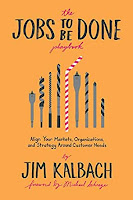Ordered and delivered immediately
– we’ve gotten used to it by now. Only rarely are we reminded of the (good?) old days when things were different.
And so it’s all over town by now: We are currently changing at breakneck speed from an industrial society of mass production to an industrialized society of individulised services and products.

Everyone already has a very concrete idea of what that means
after all, we are modern, well-behaved and eager internet consumers with good and bad experiences.
Nevertheless and surprisingly, once again it is shown that it takes a long time for mass knowledge from individuals to find its way into our organizations and institutions.
This isn’t necessarily a bad thing. After all, you don’t have to go along with every fashion. In general, it is even intelligent not to fall into fashionable actionism and ask instead: “Why change something? What in fact?”
Yes, why change anything about the way we work together?
Or how we look at and run our business? Long before the internet age, there was an answer to these smart questions:
Because people want satisfactory results. And they want them without hassle.
The economist Theodore Levitt summarized this simple truth in his famous saying: “People don’t want to buy a drill. They want a hole in the wall.”/1/
This true finding
should not have changed since then. But, again, if this has always been the case: Why should we change? Was it not good enough up to now?


Despite all the lamenting about competition:
producers, trade, politics and public services have had a remarkably free hand in what they do over the last 150 years. This is particularly true when it comes to dealing with consumers. They had a very broad power of supply, and they did not hesitate to play it off mercilessly.
Even if they wanted to understand that their customers and clients would rather buy a hole IN, or better still, the picture ON the wall – the drill was on offer. So it was sold.
“You want a picture on the wall? You’re not getting one.”
This unappreciative, uncooperative, customer-unfriendly approach was (and still is) rich in tradition. This tradition was and is very well illustrated by the legendary saying of the father of mass production, Henry Ford:
“Every buyer can have a car in any color he wants. As long as it is black.”/2/
Today, it is no longer so easy to fob off
customers in this way. Why? Because today there is far-reaching information and market transparency.
Today, networking business models are possible. Today, these business models can be digitally optimized and secured by algorithms. Today, consumers (us!) have more and more freedom and choice, with which partners, which products, which (digitalized) services we want to try to achieve what we are aiming at./3/
Especially when new, smart competitors appear on the market who have understood that the wind is blowing completely differently today, this naturally puts pressure on established organizations and institutions. Including those, we work for ourselves!
Algorithm Says Hi
So it makes sense to rethink all our activities in these organizations quickly: Unlike in the days of Henry Ford, today it is above all (!) a matter of knowing the customer and his or her wishes, offering the appropriate services and: delivering reliably (!).
It is about analyzing (Data! Data! Data!), learning and, this time, really working together with the customer.

Those who have had this insight
can easily despair of the inertia of their own company: “Why on earth doesn’t anyone realize that something urgently needs to change fundamentally?!
Despair is unpleasant and usually it serves little purpose. Let us therefore turn to more constructive things. For example, how we can shake up, inspire and motivate our colleagues in the team, department, organization, company:
Come on, let’s walk real service-oriented paths!
 All right: Service now! Ok, but… HOW?!
All right: Service now! Ok, but… HOW?!
Let “Jobs-To-Be-Done” (JTBD) help you. This framework has its origin (as often) in design, but it can easily be transferred to any other area. Yes, even to entire organizations.
JTBD is all about thinking and deciding consistently from the customer’s perspective and his/her needs. Opposing to the thinking of products, services and activities of one’s organization.
Accordingly, JTBD is based on principles that turn our organizational mindsets quite upside down, e.g.:
- People only want our services and products to solve their own tasks and not to deal with us or our organization. (Ouch!)
- People are always (!) interested in doing more things faster and/or with less hassle.
Starting from basic assumptions
like this, in a very structured way, JTBD finds out what this means for the services, products and logistics to be offered. And for the entire value-adding (equals satisfying) process between customer and service provider or producer. From start to finish.
It is all about the question: What exactly do customers want to have done? When? How? With whom? Why? To find out, JTBD takes a closer look at a few essential points:
- Who actually does the job or is responsible for it? Are several people involved? Who is involved? How? When?
- What is the actual job? Is it just one job? Or are there also preparing, adjoining measures to be considered? (JTBD, by the way, explicitly looks at so-called emotional jobs. This might seem revolutionary to us. After all, we are very much in love with processes and engineering, aren’t we?)
- How is the job done? What are the steps, what is the process, what is the technology being used? (Ah, finally!)
- What true (!) needs are behind every (!) job and its detailed steps?
Because the procedure is very structured and understandable
the framework is well suited for process-driven organizations (All of us! Us! Us!). In a practical way, this directs us to always first consider the needs of customers and clients as a basis for decision-making.
Thus, the culture becomes more and more customer-oriented over time. And ultimately, of course, the range of products and services on offer, which certainly is a good precondition for playing a leading role in a game in which you have already seen yourself the losing team.
 Most of us know that nowadays it is a real business need to finally care for the customer.
Most of us know that nowadays it is a real business need to finally care for the customer.
Because most of us have (too) often been frustrated and misunderstood customers (or citizens or employees or …) ourselves. On the one hand. On the other, most of us have had a lot of good experiences with companies which are interested in the client’s needs.
So, most of us know that today it really is about people and their affairs. In other words:
Most of us know that if we don’t take this seriously, we won’t be successful in the foreseeable future.
So we have a job to do. Let’s do it!
PS: Thank you very much, Sebastian Moss, for the reference to JTBD. It definitely has added a very effective tool to my toolbox.
Notes
- /1/ The attribution is not completely clear, see: https://quoteinvestigator.com/2019/03/23/drill/
- /2/ https://de.wikipedia.org/wiki/Henry_Ford
- /3/ That at least seems to be the case.But we should wait a little longer until we celebrate this. Because whether this is a rather good or rather bad development can probably only be judged with a few decades’ delay.
Literature
- Christensen, Clayton M.: The Innovator’s Dilemma. When Technologies Cause Great Firms to Fail.
- Kalbach, Jim: The Jobs To Be Done Playbook. Align Your Markets, Organizations, and Strategy Around Customer Needs.
 All right: Service now! Ok, but… HOW?!
All right: Service now! Ok, but… HOW?! Most of us know that nowadays it is a real business need to finally care for the customer.
Most of us know that nowadays it is a real business need to finally care for the customer.